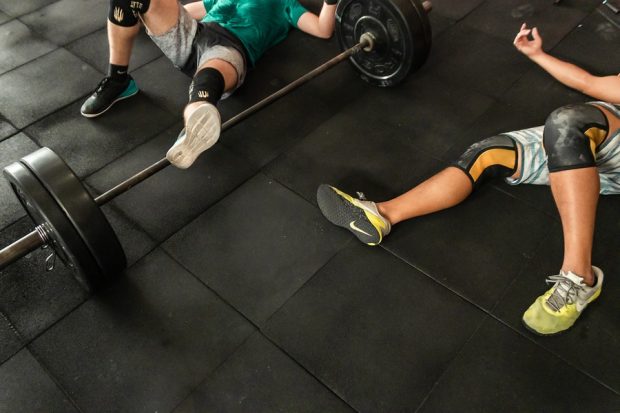Contents

Modern way of life tends to lead us towards the gym as the main location to get rid of some excess energy and, hopefully, build up some muscle, lose some fat and generally start looking more movie stars. Well, you have to set high goals in order so that when you fail you have already gone somewhere! However, one of the things that can really be a drawback in your quest for daily exercise are injuries and they can plague the most avid gym-goer as well as the first-timer. No one is 100 percent injury free and we all need time to recuperate after them, but some of them are so common that more should be done to prevent them as well.
Many people have never heard of the rotator cuff and yet this group of muscles could bring a world of pain onto them. The four muscles of this group can be strained with repetitive movements that require your shoulder to be active or it could simply be the case of tendons degenerating due to age. If you want to prevent this injury, it is a good idea to strengthen the rotator cuff muscles, however, if you have already suffered the injury, it is usually effectively treated with a combination of corticosteroid medicine and physical therapy that restores the movement to the shoulder, as well as anti-inflammatory drugs that you can take in case of swellings and pain.
Ah, yes, the “medial tibial stress syndrome” as it is colloquially known among the medical professionals. The inflammation and pain in your shinbone can appear after workouts or running on hard surfaces or uneven terrain. Sometimes even wearing poorly designed or worn-out running shoes could be the cause of this injury. Luckily, these injuries usually do not require any surgical assistance as the heal on their own, and they require time to do so. If you are experiencing pain and swelling, use ice to cool down the shin and, if necessary, reach for anti-inflammatory painkillers. Once your leg (or legs) feel strong and flexible again, with no pain, you will know your injury has healed.
With the sedentary lifestyle, both at home and at work, something like 80 percent of people will experience pain in their lower back in their lifetime. In some cases, of course, it comes from injuries, such as muscle sprain when lifting heavy objects. This is common in the gym, especially after long periods of inactivity or when overestimating your level of strength. Once again, self-care is recommended. Your pain should go away in up to 72 hours, if you restrain from physical activity and use ice to cool down the places where it hurts. You can also try massage or a warm bath, as it tends to help some people. If the pain does not subside after 72 hours, it might be the time to go see the doctor.
If you have been playing any kind of sports, you are probably well-aware of how sensitive your knees can be if you are not paying special attention to them. Knee pain tends to appear if you have muscle imbalance, or you are attempting exercises with weights that are too heavy for you. Sometimes, running downhill is a real problem for people, and runner’s in general have a potential to develop something called “the runner’s knee”, where you can hear a crunching sound when bending your leg in the knee.
In order to prevent knee injuries, you should keep your hips, abductors and quadriceps strong. Still, even if you do everything you can to prevent them, if you are a professional, you might eventually need quality sports injury treatment; this is especially true if you’re engaged in contact and team sports, as they will pit you against other people, which increases the likelihood of injury.
This common injury can appear in the wrist or the ankle, mostly, and can generally go from very light to those requiring an operation. The variety of injuries comes from the complexity of the hand and leg joints and their general mobility, which people usually take for granted. Be proactive – think about the potential for injury before it happens. Make sure you warm up your wrists and do exercise that target smaller muscles whose role is to stabilize your main ones. If you are a runner, pay special attention to the terrain you are running on – especially when running somewhere in the nature, like a forest. Treatment is relatively easy with lighter injuries, where a lot of rest and ice is needed and you might need a plaster cast or something similar.